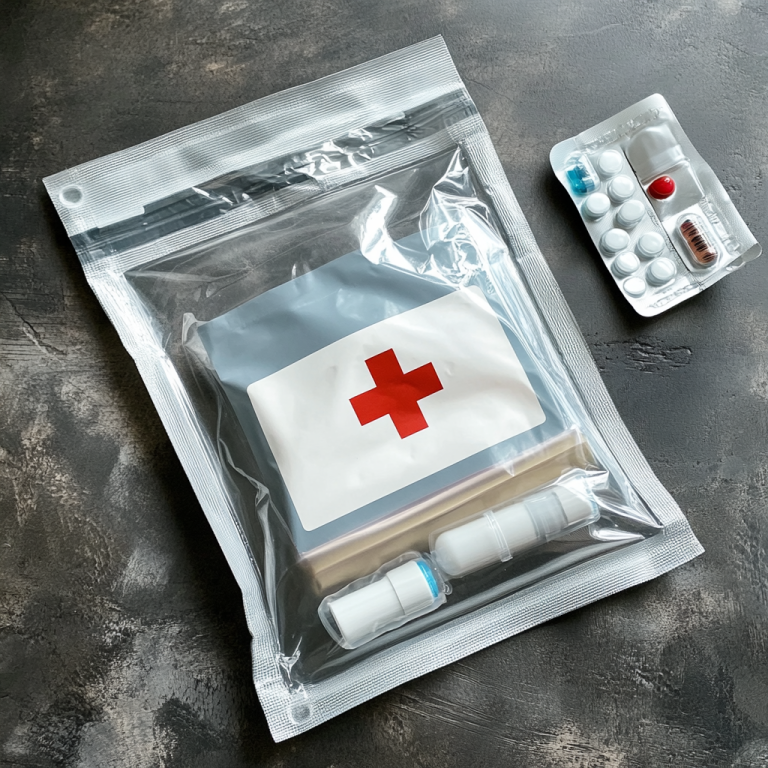Written by Bernie Carr
A couple I know had to evacuate their home over the summer as a wildfire was approaching their immediate area. They got a knock on their door from an emergency rescue person giving them 15 minutes to evacuate. They did not have an emergency bag, also known as a go bag, so they were scrambling to throw things together. Fortunately, the fire was contained before it reached their neighborhood. They resolved to assemble a go bag with all the essentials after the emergency was behind them.
Having a well-prepared go bag can make all the difference in times of emergency. Whether you’re facing a natural disaster, evacuation, or any unforeseen situation, a well-equipped go bag is your key to survival. For the purposes of this article, we will consider the evacuation as a temporary one, with a high likelihood of returning to your home as soon as the emergency has passed. Here are the essentials for a go bag, ensuring you’re ready for whatever comes your way.
The Container
The container needs to be portable and easy to carry. I would choose a lightweight backpack or duffel bag as the carrier. Choose one that is durable in a neutral color that doesn’t call attention to yourself. If you have a serviceable backpack, then use that. Now let’s look at what to pack in your go-bag. First try to find items you already have around the house and purchase what you’re missing.
Contents of Your Go Bag
- Water and Hydration: One of the most crucial elements of any emergency preparedness kit is water. Include a durable water bottle and purification tablets to ensure a clean water supply. Staying hydrated is essential for your well-being, especially in challenging situations. My backpack has a space for a hydration bag. Don’t forget to fill it before heading out.
- Nutrient-Rich Food Supplies: Pack non-perishable, high-energy snacks such as energy bars, trail mix, and dried fruits. Ensure a balance of nutrients to sustain you during an emergency. Consider dietary restrictions and preferences when selecting food items.
- First Aid Kit: A comprehensive first aid kit is non-negotiable for your go bag. Include bandages, antiseptic wipes, pain relievers, and any necessary prescription medications. Familiarize yourself with basic first aid procedures to handle minor injuries.
- Clothing and Shelter: Pack weather-appropriate clothing and a lightweight, compact emergency shelter. A compact, reflective emergency blanket can provide warmth, and a rain poncho can keep you dry in adverse weather conditions.
- Multi-Tool and Basic Tools: A versatile multi-tool can serve various purposes, from opening cans to cutting through obstacles. Include basic tools like a flashlight, batteries, and a pocket knife. These tools are indispensable in emergency situations.
- Personal Documents and Cash: If you haven’t done it yet, assemble your grab and go binder-instructions are here. Keep essential documents such as identification, insurance papers, and emergency contacts in a waterproof pouch. Include some cash in small denominations, as ATMs may not be accessible during emergencies.
- Communication Devices: Ensure you have a fully charged mobile phone with a portable charger. Consider a battery-operated or hand-crank emergency radio for updates and information. In some situations, communication can be a lifeline.
- Map and Compass: In case GPS fails, a physical map and compass can help you navigate unfamiliar terrain. Familiarize yourself with the area’s geography and evacuation routes.
- Personal Hygiene Items: Don’t overlook personal hygiene. Include items like toothbrush, toothpaste, sanitary supplies, and hand sanitizer. Maintaining cleanliness is crucial for your overall well-being.
- Emergency Contact Information: Prepare a list of emergency contacts and important information. Include local emergency services, family members, and friends. Having this information readily available can streamline communication during a crisis.
Additional items: Include an item or two to entertain yourself (and your kids) while you’re in a shelter or awaiting word that the emergency is over. You could already have books and music in your phone, a tablet for the kids. If you have pets, don’t forget to pack your pet’s food and water bowl, leash, pet foods and treats.
A well-prepared go bag is an essential element of any emergency plan. By including these ten essentials, you’ll increase your chances of weathering the storm, whatever form it may take. Regularly review your go bag to ensure all items are still appropriate to your needs and within their expiration dates. Update the contents if needed. Remember, preparedness is the key to facing uncertainties with confidence.
We are an affiliate of Amazon.com, which means we received a small commission if you click through one of our Amazon links when you shop, at totally no cost to you. This helps keep the lights on at the blog. Thanks!
About the author
Bernie Carr is the founder of Apartment Prepper. She has written several books including the best-selling Prepper’s Pocket Guide, Jake and Miller’s Big Adventure, The Penny-Pinching Prepper and How to Prepare for Most Emergencies on a $50 a Month Budget. Bernie’s latest e-book, FRUGAL DIY has just been released on Amazon. Her work appears in sites such as the Allstate Blog and Clark.com, as well as print magazines such as Backwoods Survival Guide and Prepper Survival Guide. She has been featured in national publications such as Fox Business and Popular Mechanics. Learn more about Bernie here.
FB: https://www.facebook.com/apartmentprepper
Instagram: https://www.instagram.com/apartmentpreppers/
Twitter: https://twitter.com/AptPrepper
YouTube: https://www.youtube.com/channel/UC7vOtdbo-wiBeBxD6puCr1Q
Patreon: https://patreon.com/apartmentprepper
Pinterest: https://www.pinterest.com/aptprepper/
Today’s societal climate not supportive of prepping. With your help, we can keep bringing you content that is often suppressed. Help keep Apartment Prepper alive.
Join me on Patreon for ad-free content.
Or Help out via Paypal




















